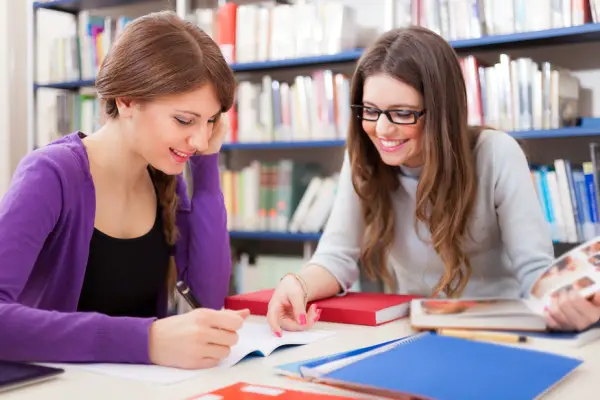Essay in very simple language with the boundaries of different words here. Here you can find Essay, Speech, Paragraph on Woman Education in English language for 5, 6, 7, 8, 9, 10, 11, 12 or IAS, IPS Banking and other competitive exams.
Essay on Woman Education in Very Simple Words
In India, women have been regarded as revered Shaktiswaroop from every point of view. Except for some dark period of history, importance was always given to education and culture of women.
Female education became endangered in India due to the practice of curtains among the Muslim civilization. Only exceptionally women from rich Muslim families were educated at home. Nur Jahan, Jahanara and Zebunnisa are famous among these. Majority of the women were deprived of education due to the reasons of child marriage, practice of sati etc.
In the 19th century in India, almost all educational institutions were run by people who lead in public. Some English people were also among them. At this time King Rammohan Roy worked tirelessly to remove the practice of child marriage and sati. Female education was encouraged by the removal of these evil practices. Ishwarchandra Vidyasagar opened many schools in Bengal for the education of girls.
According to the Indian Education Commission (Hunter Commission) of 1872, teacher training was arranged by the Government of India. The Commission presented several encouraging suggestions regarding education, but due to fear of conversion, the suggestions could not be implemented much. By the end of the 19th century, there were a total of 12 colleges, 6 schools and 5827 primary schools for girls in India. The number of female students in the whole of India was 6,840. By the end of the century, the women were moving towards higher education but they lacked female students.
In the 19th century several colleges for girls were opened in England, France and Germany. In England, efforts were being made to give girls the same education as boys, but at the end of the 19th century in England it was planned that all branches of female education should be included in the curriculum. It is called F.K. of King’s College London. D. Morris and others encouraged a lot.
In the early years of the 20th century, it was noted in India that education should be useful for their social life as there was no difference between the education of boys and girls as far as writing was concerned. 1916 is important from the point of view of higher education. At this time, Lady Hardinge College was established in Delhi and Shri D.K. Karve established a university for Indian women in which the university was named Mrs. Nathi Bai Thakarasi Women’s University, after her mother’s name, after meeting a businessman in Bombay province with the most money.
Karve ji felt that the education of women and men should be compatible with their ideals. From this time, Muslim women also made their debut in higher education. Art, agriculture, commerce, etc. were also included in women’s technical education and progress was made in women’s higher education. In the absence of funds, separate colleges for girls could not be opened much more, but by actively participating in political movements, female co-education grew further.
In 1926, it was decided by an All India Women’s Conference that a school for girls should be opened which is completely suited to the ideals of Indian life and all the women should manage it themselves. Hence, Lady Arvin College was established in Delhi itself, in which attention was given to home science and teacher training. The total number of girl students studying in classes from primary to university in the year 19–8 increased to 71. Among them were students taking technical and vocational education.
After India’s independence, although much progress was made in women’s education than before, but it could not achieve the equality of other western countries. From this time on, there was special progress in music and dance in female education. The University Education Commission of 1944, while expressing opinion about education, said that women have demonstrated equality in thought and field, now they should consider education separately in accordance with women’s ideals.
Training in home science, home economics, nursing and fine arts is necessary in higher education. Subsequently, home science was made compulsory in high school classes and several art centers were opened separately for girls’ education.
After 10 years of independence, the total number of female students increased to 4,9,912 and women started entering every field of education. On 19 May 1956, a National Committee was appointed to look into the problems of education, after considering very seriously their problems, the government has kept the list of suitable occupations for women, although the environment in all these businesses is not yet available. Could be made. After getting higher education, women mostly work in teaching, medical work or offices.
Not only in capitalist nations like England, Germany, America, Japan etc., but also in communist nations like Russia, Roumania, Yugoslavia etc., education has gone much further than India. Although in the early 20th century there was a fear in Western countries that in the competition of Purasha, women are moving away from their field of development to adopt male life which is not suitable for them, but now this nation also focus on special education of women. Giving and getting appropriate qualifications in various fields of education, the women there by building their well-educated nation society Itself.

